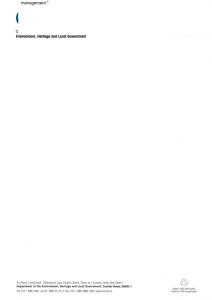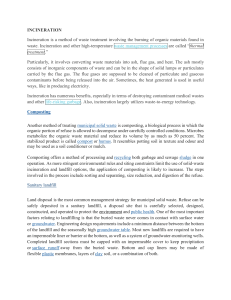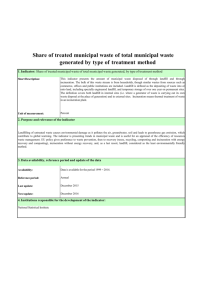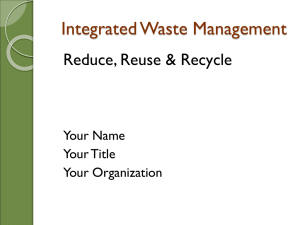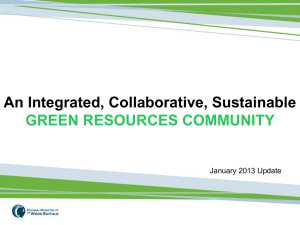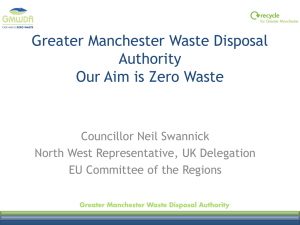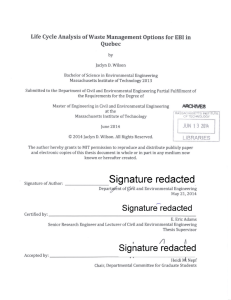Where Does Your Rubbish Go?
advertisement
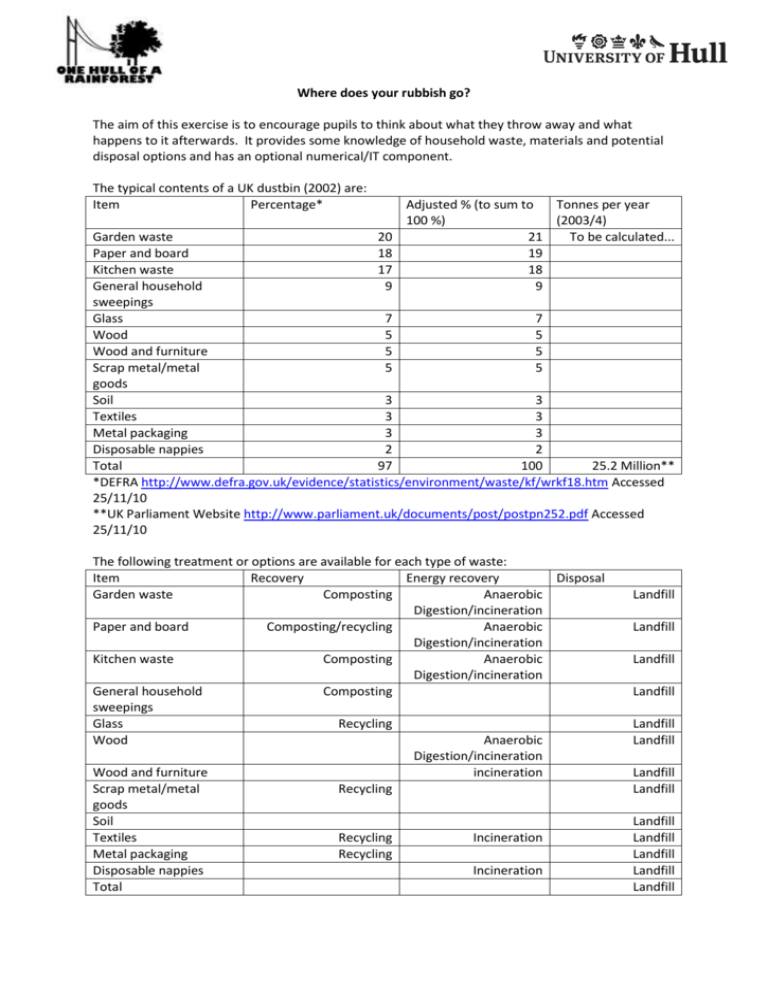
Where does your rubbish go? The aim of this exercise is to encourage pupils to think about what they throw away and what happens to it afterwards. It provides some knowledge of household waste, materials and potential disposal options and has an optional numerical/IT component. The typical contents of a UK dustbin (2002) are: Item Percentage* Adjusted % (to sum to Tonnes per year 100 %) (2003/4) 21 To be calculated... 19 18 9 Garden waste 20 Paper and board 18 Kitchen waste 17 General household 9 sweepings Glass 7 7 Wood 5 5 Wood and furniture 5 5 Scrap metal/metal 5 5 goods Soil 3 3 Textiles 3 3 Metal packaging 3 3 Disposable nappies 2 2 Total 97 100 25.2 Million** *DEFRA http://www.defra.gov.uk/evidence/statistics/environment/waste/kf/wrkf18.htm Accessed 25/11/10 **UK Parliament Website http://www.parliament.uk/documents/post/postpn252.pdf Accessed 25/11/10 The following treatment or options are available for each type of waste: Item Recovery Energy recovery Disposal Garden waste Composting Anaerobic Digestion/incineration Paper and board Composting/recycling Anaerobic Digestion/incineration Kitchen waste Composting Anaerobic Digestion/incineration General household Composting sweepings Glass Recycling Wood Anaerobic Digestion/incineration Wood and furniture incineration Scrap metal/metal Recycling goods Soil Textiles Recycling Incineration Metal packaging Recycling Disposable nappies Incineration Total Landfill Landfill Landfill Landfill Landfill Landfill Landfill Landfill Landfill Landfill Landfill Landfill Landfill Much waste strategy in the UK and EU is underpinned by the waste hierarchy. According to the waste hierarchy, the highest priority is to produce less waste; second to re-use (i.e., with products or a component remaining in their original form); third to recycle or compost (i.e., recover materials, without retaining the identity of products); fourth to lose but products and materials, but recover energy by incineration or other thermal treatments with energy capture. Waste Hierarchy Suggested activities: 1. Pupils can use the internet to find the kerbside collection service offered in Hull – available on the Council’s website. 2. Calculate the proportion of household waste that could be sent to each disposal mechanism. 3. Determine the combination of practices that would give the best performance in terms of the waste hierarchy. 4. Discuss ways in which they and/or their families/schools could produce less waste. 5. Consider items that could be re-used, and in what ways. 6. Plot a pie chart to demonstrate the contents of the typical dustbin in the UK. 7. Bring items of waste to school to discuss what could be done with each.

